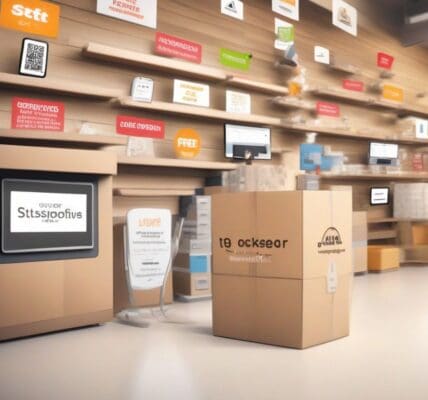Holiday Online Sales in the U.S. Set for Strong Growth in 2024: Key Trends and Insights
As we approach the holiday shopping season, recent forecasts from Adobe Analytics indicate that U.S. online sales will experience a significant increase in 2024. This comes as a welcome signal for retailers hoping to capitalize on consumer trends and adapt to the evolving landscape of e-commerce. Defined from November 1 to December 31, the holiday shopping period is expected to grow by 8.4% year-over-year, reaching a staggering $240.8 billion, up from $221.8 billion in 2023.
Early Shopping and Discount-Driven Purchases
One of the primary factors influencing this growth is the shift in consumer behavior toward earlier purchases. With a flood of discounts now available throughout the season, shoppers are taking advantage of deals well ahead of the traditional last-minute rush. Vivek Pandya, lead analyst at Adobe Digital Insights, noted that this new shopping pattern reflects a broader budgeting strategy among consumers. As retailers adopt more aggressive discounting tactics, specifically in categories like electronics, appliances, and sporting goods, Adobe anticipates an additional $2 billion to $3 billion in online sales this year.
The data indicates that for every 1% decrease in price during promotional events, demand rises by 1.025%. Such price sensitivity leads consumers to actively seek out discounted items, thus propelling e-commerce growth during the holiday season.
The Dominance of Mobile Commerce
Another critical trend is the increasing role of mobile devices in holiday shopping. Adobe projects that mobile e-commerce spending will reach $128.1 billion, which marks a 12.8% year-over-year growth. This channel is expected to account for 53.2% of all online sales during the holiday season, a notable increase from 51.1% in 2023. The rise of mobile commerce not only showcases a shift in consumer preferences but also highlights the need for retailers to optimize their mobile platforms effectively.
Furthermore, as mobile spending rises, so does the utilization of “buy now, pay later” (BNPL) options, allowing consumers to manage their budgets better during the holiday rush. With the increased popularity of these services, retailers must consider integrating BNPL offerings for improved sales conversions.
Influencer Marketing Impact
The influence of social media and influencers is projected to drive consumer traffic significantly. Adobe forecasts that influencer-led promotional efforts will lead to consumers shopping ten times more compared to the overall social traffic to retail sites. This insight underscores the importance for retailers to harness social media marketing strategies and engage with influencers to reach wider audiences. Brands leveraging influencer partnerships can effectively tap into niche markets, facilitating deeper consumer connections and driving higher conversion rates.
The Cyber 5 and Record Sales Anticipation
Notably, the Cyber 5, which encompasses the five-day stretch from Thanksgiving to Cyber Monday, is expected to generate $40.6 billion in online sales, which is an increase of 7% from the previous year. Cyber Monday is anticipated to reign as the top online shopping day of the year, bringing in $13.2 billion for retailers—a 6.1% increase. While the overall holiday shopping blitz is predicted to grow at a faster pace, the Cyber 5 remains a substantial contributor to total sales volume.
Thanksgiving and Black Friday are also set to see impressive growth, with projected online sales of $6.1 billion and $10.8 billion, respectively. These days, while traditionally overshadowed by Cyber Monday, are expected to grow at more rapid rates, further diversifying shopping patterns.
Strategic Opportunities for Retailers
The findings from Adobe’s forecast provide valuable insights for online retailers preparing for the 2024 holiday season. Key strategies include:
1. Implementing Dynamic Pricing: Retailers should consider employing dynamic pricing models that respond promptly to changes in demand and competitor pricing to capitalize on consumer price sensitivity.
2. Enhancing Mobile Experiences: Given the uptick in mobile shopping, optimizing websites and applications for mobile users is crucial. Retailers should focus on user-friendly designs, swift loading times, and streamlined checkout processes to minimize cart abandonment rates.
3. Leveraging Social Media: Brands can benefit from utilizing platforms where their target audience engages, especially through influencer marketing. Crafting visually appealing and relatable content can drive significant online traffic and enhance brand visibility.
4. Adopting Flexible Payment Options: Offering BNPL options can help retailers appeal to budget-conscious consumers, potentially increasing average order value and reducing cart abandonment.
5. Promoting Discounts Strategically: With discounts proving effective in driving sales, retailers should plan their promotional calendar carefully. Strategic timing and targeted discount offers can create urgency and boost sales conversions.
Conclusion
The holiday season in 2024 promises remarkable opportunities for online retailers to drive engagement and sales like never before. Understanding consumer behavior, optimizing mobile shopping, and leveraging social media will be pivotal for success. By adapting to shifting trends and consumer preferences, retailers can not only meet but exceed their sales goals in this competitive landscape.












